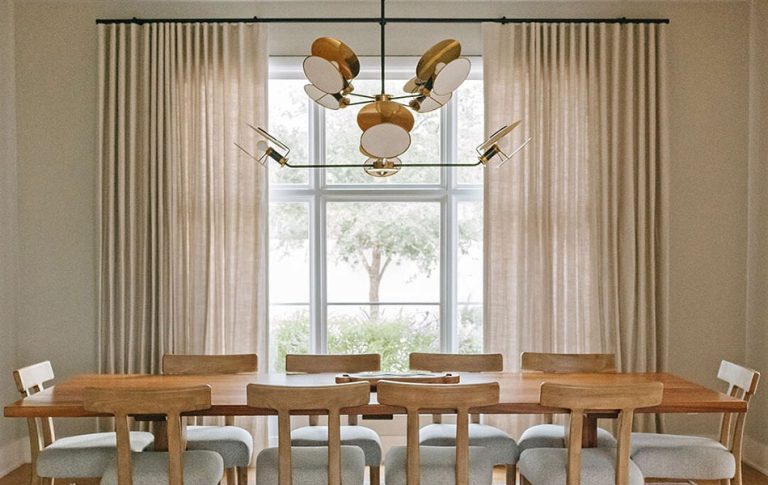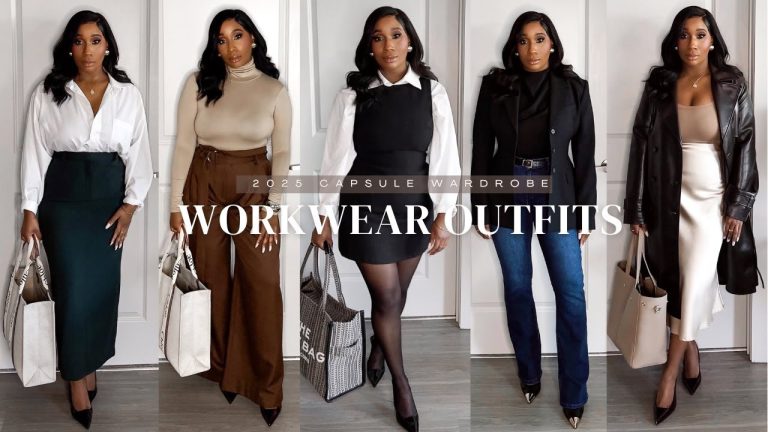Floral Curtains: The Ultimate Guide to Weaving Nature’s Beauty Into Your Home

When you hear "floral curtains," does your mind jump to your grandmother’s heavy, dark, rose-chintz drapes? It’s time for a refresh. The floral curtain has undergone a dramatic evolution, emerging as a powerful and versatile design tool for the modern home. No longer relegated to stuffy, traditional spaces, today’s botanical prints are bold, minimalist, abstract, and bursting with personality.
This comprehensive guide will walk you through everything you need to know about choosing and styling floral curtains. We'll explore how they influence light and mood, delve into the psychology of their patterns, and provide room-by-room styling secrets to help you create a space that is uniquely and authentically yours.
Why Floral Curtains? More Than Just a Pretty Print
At their core, floral curtains are a bridge between the built environment and the natural world—a concept known as biophilic design. Incorporating elements of nature into our homes has been proven to reduce stress, improve creativity, and enhance our overall well-being. A pair of floral curtains does this effortlessly, bringing the serenity and vibrancy of a garden indoors.
But their benefits extend far beyond psychology:
- Visual Interest and Focal Point: In a room of solid colors, floral curtains instantly become a dynamic focal point, adding depth and narrative.
- Light Control and Privacy: The fabric and lining you choose allow you to filter harsh sunlight beautifully, creating a soft, dappled light effect reminiscent of a forest canopy, while maintaining privacy.
- Versatility and Adaptability: From sprawling tropical prints to delicate sprigs of lavender, there is a floral pattern to match every single design aesthetic imaginable.
The Language of Petals: Choosing Your Floral Pattern
Not all florals are created equal. The pattern you choose sets the entire tone for your space. Understanding this "language" is the first step to a successful design.
1. The Large-Scale Botanical Print
Think oversized monstera leaves, giant magnolias, or bold tropical blooms. This is for the daring decorator.
- Best For: Making a grand, dramatic statement. Perfect for rooms with high ceilings and ample wall space.
- Styling Tip: To avoid overwhelming the room, pair large-scale florals with neutral, solid-colored furniture and minimalist accessories. Let the curtains be the undisputed star.
- Room Fit: Living rooms, master bedrooms, sunrooms.
2. The Delicate Ditsy Print
Ditsy prints feature small, repeating, closely-spaced flowers and are the epitome of cottagecore and shabby-chic elegance.
- Best For: Creating a soft, romantic, and airy atmosphere. They add pattern without heaviness.
- Styling Tip: Perfect for layering. Use them in conjunction with sheer white curtains for a dreamy, layered look. Pair with vintage furniture and natural wood tones.
- Room Fit: Bedrooms, nurseries, bathrooms, cozy reading nooks.
3. The Abstract & Watercolor Floral
This is where art meets function. These prints often use blurred edges, blended colors, and impressionistic techniques to create a soft, artistic effect.
- Best For: Adding a modern, sophisticated, and unique touch. They feel less literal and more like a piece of wall art.
- Styling Tip: Complement an abstract floral with other textured elements like a chunky knit throw, a sleek metal floor lamp, or a simple linen sofa. They bridge the gap between modern and traditional seamlessly.
- Room Fit: Home offices, living rooms, modern bedrooms.
4. The Vintage & Toile Print
Toile de Jouy, with its intricate, monochromatic scenes of pastoral life (often including florals), and other vintage-inspired prints tell a story.
- Best For: Evoking a sense of history, elegance, and classic charm.
- Styling Tip: Keep the color palette restrained. A black and white toile, for example, looks stunning against navy or sage green walls. Mix with antique brass finishes and rich, dark wood.
- Room Fit: Dining rooms, traditional studies, formal living areas.
A Perfect Bloom: Matching Floral Curtains to Your Room's Function
Each room in your home has different needs. Here’s how to make floral curtains work perfectly in every space.

The Living Room: The Statement Sanctuary
The living room is your home's center stage, making it the ideal place for a bold floral statement.
- Fabric & Lining: Opt for medium to heavy-weight fabrics like linen blends or velvet for a luxurious drape. A thermal lining can help with energy efficiency.
- Style Idea: Go for floor-to-ceiling curtains in a large-scale, colorful floral to create the illusion of height and grandeur. Balance the busy pattern with a solid, neutral sofa and a simple jute rug.
The Bedroom: The Serene Escape
In the bedroom, the goal is to create a calming, restorative retreat.
- Fabric & Lining: Blackout lining is your best friend here. Pair it with a soft cotton, linen, or even a blackout velvet to ensure a good night's sleep.
- Style Idea: Choose a floral with a dark background (like navy or charcoal) and soft, muted blooms. This creates a cozy, cocoon-like feeling. Alternatively, a light, airy ditsy print on a white background can make the room feel fresh and peaceful.
The Kitchen: A Sprig of Freshness
Florals in the kitchen? Absolutely! They add a burst of cheer and life.
- Fabric & Lining: Avoid heavy fabrics. Choose easy-to-clean cottons or polyester blends. A simple, unlined style is often sufficient.
- Style Idea: A café curtain is a classic choice, covering only the lower half of the window to maintain light and sightlines. A pattern with herbs, vegetables, or simple wildflowers ties the theme together beautifully.
The Bathroom: A Touch of Spa-Like Luxury
Bring a spa-like, organic feel to your bathroom with the right floral curtains.
- Fabric & Lining: Moisture-resistant fabrics are key. Look for quick-dry options. A liner can help protect the main fabric.
- Style Idea: Choose prints with green foliage, ferns, or bamboo against a light background to enhance the serene, natural vibe. Keep it simple and avoid cluttering a small space.
The Art of Coordination: Weaving Your Curtains Into the Room
The biggest fear with a bold pattern is that it will clash. Fear not. These principles will ensure your floral curtains look intentional and curated.
1. Pull Colors, Don't Match Them.
Your curtains don't need to be the same color as your walls or sofa. In fact, it's better if they aren't. Look at the secondary or tertiary colors in the curtain's pattern. Use those to select your throw pillows, an area rug, or a piece of art. This creates a cohesive, layered look rather than a flat, matched one.
2. Balance with Solids and Textures.
A busy floral pattern needs calm companions. Ground your curtains with plenty of solid colors in your furniture, walls, and large decor items. Introduce different textures—a nubby wool blanket, a smooth leather chair, a woven basket—to add depth and interest without competing with the pattern.
3. Consider the Wall Color.
- Light Walls (White, Cream, Light Grey): Provide a clean, gallery-like backdrop that allows any floral curtain to pop.
- Dark Walls (Navy, Forest Green, Charcoal): Create a dramatic, intimate, and incredibly sophisticated setting, especially for florals with light-colored backgrounds or metallic accents.
- Colored Walls (Sage, Blush, Butter Yellow): Ensure the wall color is a muted tone that appears somewhere within the curtain's pattern for a harmonious, monochromatic effect.
Beyond Aesthetics: The Practicalities of Purchase
Before you click "buy," consider these crucial practical aspects.
- Measuring Correctly: The golden rule of curtains is to go high and wide. Hang the rod 4-6 inches above the window frame and extend it 6-10 inches on either side. This makes the window appear larger and allows the curtains to frame the view without blocking light when open. For length, let them just "kiss" the floor or have a slight half-inch "puddle" for a more decadent look.
- Fabric & Lining Choices:
- Linen & Cotton: Natural, breathable, and casual. They let in a beautiful, soft light.
- Velvet: Luxurious, heavy, and excellent for insulation and blackout.
- Polyester & Blends: Durable, affordable, and often wrinkle-resistant.
- Blackout Lining: Essential for bedrooms and media rooms.
- Thermal Lining: Saves on energy bills by insulating the window.

Conclusion: Let Your Interior Landscape Bloom
Floral curtains are a testament to the enduring power of nature in design. They are not a decorative afterthought but a foundational element that can dictate the mood, style, and energy of a room. By moving beyond outdated stereotypes and embracing the vast new world of botanical prints—from the daringly large-scale to the softly abstract—you unlock a powerful tool for self-expression.
So, take a chance. Let in the light, weave in a story, and transform your home into a personal sanctuary that truly reflects the beauty of the world outside your window. Your perfect floral curtain is out there, waiting to help your space blossom.
A detailed "How-To" section on measuring and installing curtain rods and hardware.
- A section on "The History of Floral Patterns in Textile Design."
- *A buyer's guide with 3-5 specific, linked product examples for each floral pattern type (e.g., "5 Best Large-Scale Tropical Floral Curtains").*
- A case study: "A Room Transformation: From Bland to Bloom."
- An interview with an interior designer, providing expert quotes and tips.
- A deeper dive into "Sustainable and Ethical Floral Curtain Brands."
Of course! Here are the to complement the floral curtains article.
FAQs (Frequently Asked Questions)
Q1: Are floral curtains out of style?
A: Absolutely not! Floral curtains are timeless, but the styles have evolved. The heavy, dated chintz of the past has been replaced by modern interpretations like large-scale botanicals, abstract watercolor designs, and minimalist ditsy prints. When chosen to complement your current decor, floral curtains are a fresh and stylish choice.
Q2: What colors go well with floral curtains?
A: The best approach is to pull colors from the pattern itself.
- For a balanced look, choose a neutral from the curtain for your walls (e.g., beige, grey, white).
- For an accent, select a less dominant color from the pattern for throw pillows or an armchair.
- For a dramatic look, pair floral curtains with a dark wall color that matches the background of the print, like navy or forest green.
Q3: How do I stop my floral curtains from making the room look too busy or small?
A: The key is balance.
- Use Solids: Ground the pattern with solid-colored furniture on large pieces like sofas and beds.
- Maximize Light: Hang the curtains high and wide to make the window appear larger, and choose lighter-colored linings or sheers underneath to reflect light.
- Keep it Simple: Avoid competing patterns on other large surfaces. Let the curtains be the sole focal point.
Q4: Can I use floral curtains in a modern or minimalist room?
A: Yes! The secret is in the print and styling.
- Choose the Right Print: Opt for abstract, geometric, or large-scale tropical florals with a clean color palette.
- Style Minimally: Pair them with sleek furniture, metal accents, and plenty of negative space (uncluttered areas). This creates a striking contrast that feels intentional and modern.
Q5: What is the best fabric for floral curtains?
A: It depends on the room's function:
- Linen/Cotton: Perfect for living areas and kitchens; offers a casual, airy feel.
- Velvet (often a blend): Ideal for bedrooms and dining rooms; provides luxury, insulation, and excellent light blockage.
- Polyester/Blends: A great durable and wrinkle-resistant option for high-traffic areas or families.
Q6: Should floral curtains be long?
A: In most cases, yes. For an elegant, standard look, curtains should just touch the floor ("break"). For a more dramatic, decadent look, a slight "puddle" (1-2 inches extra) works well. Avoid curtains that are too short, as they can make a room feel unfinished.






